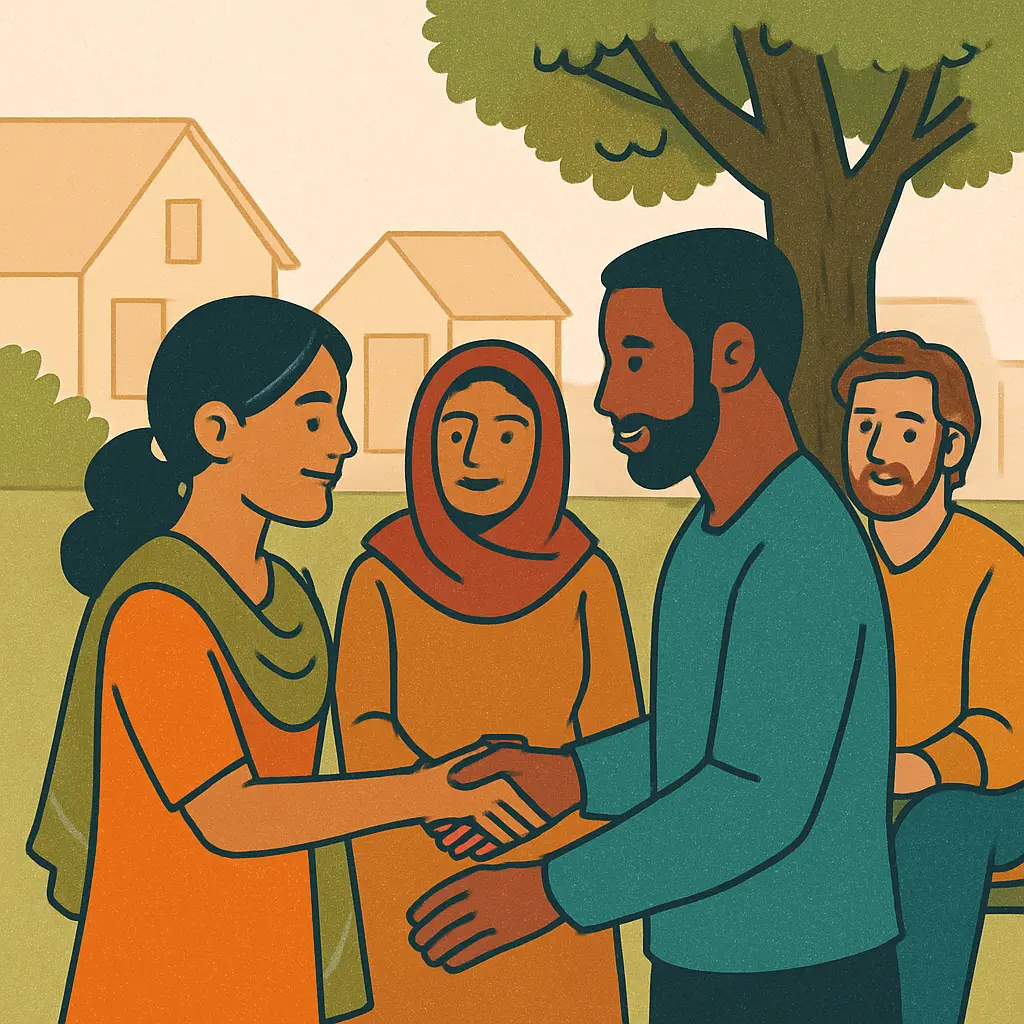“Connection is why we’re here,” says researcher Dr. Brené Brown. “We are hardwired to connect with others, it’s what gives purpose and meaning to our lives.” Yet in our increasingly individualistic society, many people struggling with mental health challenges face them alone, believing that healing is a solitary journey.
The Loneliness Epidemic and Mental Health
The U.S. Surgeon General has declared loneliness a public health epidemic, with health impacts equivalent to smoking 15 cigarettes daily. This crisis particularly affects young adults, with 60% reporting serious loneliness (Cigna, 2023).
Loneliness and mental health challenges create a vicious cycle: depression and anxiety make it harder to maintain relationships, while isolation worsens mental health symptoms. Breaking this cycle requires intentional community building and connection.
Why Community Matters for Mental Health
Human beings evolved in small, tight-knit communities where mental health was a collective concern. Modern research confirms what traditional cultures always knew: we heal in relationship with others.
Biological Benefits of Connection:
- Reduces cortisol (stress hormone) levels
- Increases oxytocin and dopamine production
- Activates the parasympathetic nervous system
- Strengthens immune function
Psychological Benefits:
- Provides meaning and purpose
- Offers different perspectives on challenges
- Creates accountability and motivation
- Reduces shame through shared experience
Social Benefits:
- Builds practical support networks
- Develops communication and interpersonal skills
- Creates opportunities for giving back
- Fosters sense of belonging
Types of Healing Communities
Mental health communities can take many forms, each offering unique benefits:
Support Groups: Peer-led or professionally facilitated groups where people with similar challenges share experiences and coping strategies.
Therapeutic Communities: Residential or day programs that use community relationships as the primary method of healing.
Creative Communities: Groups organized around artistic expression, music, writing, or other creative activities.
Spiritual Communities: Faith-based or spiritual communities that offer meaning-making and transcendent connection.
Online Communities: Digital spaces that connect people across geographical boundaries, particularly valuable for rare conditions or stigmatized experiences.
Activity-Based Communities: Groups centered around hobbies, volunteer work, or shared interests that provide natural connection opportunities.
Building Authentic Community Connections
Not all social interaction creates a healing community. Authentic connection requires:
Vulnerability: Sharing real struggles and emotions, not just surface-level pleasantries.
Reciprocity: Both giving and receiving support, recognizing that everyone has something to offer.
Consistency: Regular, ongoing contact that builds trust and deeper relationships over time.
Diversity: Including people with different backgrounds, experiences, and perspectives.
Safety: Clear boundaries and agreements that protect all community members.
Overcoming Barriers to Community Connection
Many factors prevent people from accessing healing communities:
Stigma: Fear of judgment about mental health challenges or personal struggles.
Social Anxiety: Difficulty initiating or maintaining social connections due to anxiety or depression.
Time Constraints: Busy schedules that prioritize individual achievement over community building.
Geographical Barriers: Living in areas with limited mental health resources or like-minded people.
Past Trauma: Previous negative experiences with groups or relationships that create fear of connection.
Solutions for Connection:
- Start small with one-on-one connections before joining groups
- Use online platforms to practice social skills in lower-stakes environments
- Look for communities based on interests or activities, not just mental health
- Consider professional help to address underlying barriers to connection
- Remember that building community takes time and patience
Creating Community Where None Exists
Sometimes healing communities don’t exist in your area or for your specific needs. Creating new communities can be deeply healing:
Identify Your Needs: What kind of support or connection are you seeking?
Start Small: Begin with just one or two other people who share similar interests or challenges.
Choose Format: Decide whether to meet in person, online, or both.
Establish Purpose: Create a simple mission or focus for your group.
Set Boundaries: Establish guidelines for confidentiality, respect, and safety.
Be Patient: Community building takes time, and groups often start small before growing.
The Ripple Effect of Healing Communities
When individuals heal in community, the benefits extend far beyond the original group. Healed people become healers, creating ripple effects of wellness throughout families, workplaces, and broader communities.
Research shows that social support not only improves individual mental health outcomes but also strengthens entire communities’ resilience to collective trauma, economic stress, and social challenges.
Professional and Peer Support: Both Matter
While professional mental health treatment remains important, peer support offers unique benefits that complement therapy:
- Lived experience expertise that professionals may lack
- Hope and inspiration from seeing others who have overcome similar challenges
- Practical advice based on real-world experience
- Ongoing support beyond the therapy hour
- Reduced power dynamics that can exist in professional relationships
The most effective mental health approaches often combine professional treatment with strong peer support networks.
Community isn’t a luxury in mental health recovery—it’s a necessity. In a world that often promotes individual solutions to collective problems, healing communities remind us that we’re stronger together than apart.
References:
- Brown, B. (2010). The gifts of imperfection: Let go of who you think you’re supposed to be. Hazelden Publishing.
- Cigna. (2023). The loneliness epidemic: A post-pandemic perspective. Cigna Corporation.
- U.S. Surgeon General. (2023). Our epidemic of loneliness and isolation. Department of Health and Human Services.


